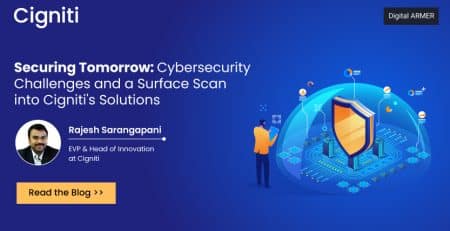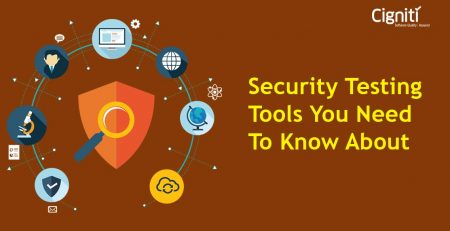Analyzing the WEF’s 2024 Cybersecurity Report: Insights for Tackling Cyber Inequity
“No country or organization is spared from cybercrime, yet many are direly underequipped to face the threats effectively, and we cannot have effective global response mechanisms without closing the capacity gap. Key stakeholders must work collaboratively towards immediate, strategic actions that can help ensure a more secure and resilient global cyberspace.” – Jürgen Stock, Secretary-General of INTERPOL.
At the January 2024 Davos forum, discussions likely scrutinized the impact of this assertion. While enterprises with substantial financial resources can embed security into all strategic business goals from the start, those lacking such resources may face challenges in effectively integrating security measures.
This underscores the divide between cyber-resilient entities and those struggling with cybersecurity complexities. The World Economic Forum (WEF) Global Cybersecurity Outlook 2024 sheds light on this growing divide, emphasizing the transformative influence of emerging technologies on cyber inequities.
Exploring Global Cyber Inequity
The report underscores a widening cyber gap, with cyber-resilient organizations increasingly distinct from that lacking resilience. Simultaneously, there’s a dwindling population of minimally cyber-resilient entities, disproportionately impacting small and medium enterprises (SMEs) despite their significant presence in national ecosystems.
Industry experts believe cyber resilience depends on strong collaboration and communication among top executives, ensuring everyone agrees on security priorities within the organization and the industry. This collaboration is also a key factor in addressing inequity in cybersecurity measures.
This collaboration is pivotal as integrating security into all strategic business objectives is imperative, driving a wedge between cyber-resilient and vulnerable entities. 90% of the 120 executives surveyed emphasized the need for immediate action to confront the escalating cyber inequity.
Cyber-Resilience Disparity: Understanding the Divide
While large enterprises exhibit notable improvements, small and medium-sized companies witness significant declines driven by macroeconomic shifts, industry regulations, and early adoption of transformative technology.
By 2026, 70% of boards will include one member with cybersecurity experience – Gartner.
This growing disparity is exacerbated by the widening cyber skills shortage, with only 15% of organizations expressing optimism about enhancing cyber education in the next two years. In an interconnected landscape, no organization remains immune, as external partners emerge as vital assets and significant cybersecurity threats.
Notably, 41% of surveyed organizations attributed material incidents in the past year to third-party involvement, as highlighted in the report.
Factors Affecting Cyber Inequity
The two core factors that drive this divide are:
- The cost of accessing adequate cyber services and tools.
- Largest organizations lead in ecosystem tech adoption and talent acquisition.
Historically, various factors have contributed to divergent cyber capabilities among public and private entities. While certain organizations emphasized resilience through strategic investments, others neglected such measures.
Additionally, some sectors enforced stringent regulations to safeguard human safety, national security, or global financial stability, fostering disparate cyber landscapes. Moreover, organizational, sectoral, and country-specific circumstances and diverse responses to universal cyber challenges further accentuate this division.
SME Vulnerability and Cyber Skill Gap
Smaller organizations face challenges in recovering from financial losses and operational disruptions, with only 25% having cyber insurance—three times less than larger counterparts, who boast a 75% adoption rate. This trend remains consistent across organizations of varying sizes, with larger entities consistently showing higher cyber insurance adoption rates. The rising costs of cyber insurance further widen this gap, leaving smaller organizations with fewer options for mitigating risks.
The “cybersecurity poverty line (CPL)” concept goes beyond financial limitations to include a wider skills gap, such as in cyber expertise, leadership, and access to advanced technologies. This multifaceted inequality has persisted, leading to a consistent rise in cyber-resilience disparities, notably among lower-revenue organizations, where insufficient cyber resilience has increased by 32% since 2022.
Cigniti’s Strategy Against Cyber Inequity
Through cutting-edge technologies like AI-driven threat intelligence and behavior analytics, Cigniti leads in cybersecurity solutions, emphasizing cyber assurance and proactive vulnerability identification.
They champion Dev-Sec-Ops, integrating security seamlessly into the development lifecycle while actively engaging in threat intelligence and information sharing to stay ahead of emerging threats. With scalable and adaptable solutions, Cigniti caters to the specific needs of organizations, ensuring the effective safeguarding of valuable assets and sensitive information, whether for small enterprises or large multinational corporations.
Cigniti prioritizes threat intelligence and information sharing, actively engaging in cybersecurity communities and partnering with industry leaders to stay ahead of emerging threats. This proactive stance ensures clients receive the latest security measures, bolstering their defense against cyber risks. One such initiative is Digital Armer, strengthening Cigniti’s commitment to cybersecurity excellence.
Digital Armer: Shaping Safer Enterprises
Digital ARMER, part of Cigniti’s commitment to cybersecurity, enhances resilience through an annual program coinciding with Cybersecurity Awareness Month. This practitioner-focused initiative spans a month, empowering participants to strengthen their enterprises. Featuring the CISO Talk Series, podcasts, and hackathons, it offers a platform for sharing insights and advancing cybersecurity practices. Digital ARMER cultivates a community committed to a safer digital future through collaborative discussions and recognition of contributions.
Click here to learn more about Digital Armer.
Conclusion
Affordability emerges as a critical determinant of cyber-resilience success, emphasizing the necessity to design risk-appropriate, affordable, and tailored architecture for large multinationals and SMEs. Cigniti’s comprehensive Cybersecurity Security Assurance program is pivotal in enhancing security testing capabilities across organizations of all sizes. This program ensures the delivery of a secure development lifecycle by addressing key elements such as people, processes, tools, and culture.
Through detailed assessments and implementation roadmaps, Cigniti facilitates adopting best practices like Security Requirements Engineering and Risk-Driven Design, enabling organizations to mitigate risks and align with compliance requirements effectively. This approach strengthens the overall security posture in the face of evolving cyber threats.
Need help? Schedule a discussion to learn more about Cybersecurity and how to tackle cyber inequity.





Leave a Reply